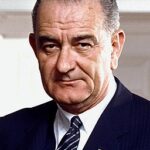The Historic Decision
President Lyndon B. Johnson signed Medicare and Medicaid into law on July 30, 1965. This landmark legislation fulfilled decades of Democratic aspirations for universal healthcare coverage. Johnson traveled to Independence, Missouri, to sign the bill alongside former President Harry Truman. Truman had first proposed national health insurance in 1945, making this moment symbolically powerful.
Legislative Background and Strategy
Johnson leveraged his landslide 1964 election victory to push healthcare reform through Congress. The Medicare program targeted Americans aged 65 and older, providing hospital and medical insurance. 📊 Congressional Democrats had expanded majorities, creating favorable conditions for passage. Medicaid addressed healthcare needs of low-income families and individuals. Johnson’s Great Society vision encompassed both programs as essential social safety nets.
Implementation and Early Challenges
The Social Security Administration managed Medicare implementation within eleven months. 💰 Initial funding came through payroll taxes and federal general revenues. Medicaid required state-federal cooperation, creating implementation complexities across different states. Healthcare providers initially resisted participation due to government payment structures. Johnson’s administration worked extensively with medical associations to ensure smooth program launches.
Impact:
Immediate Healthcare Access Expansion
Medicare and Medicaid immediately expanded healthcare coverage to 35 million Americans. Elderly citizens gained hospital insurance and optional medical coverage through Medicare Part A and B. 📊 Emergency room visits by seniors decreased as preventive care became accessible. Medicaid provided coverage for pregnant women, children, and disabled individuals in low-income families. Rural hospitals experienced increased patient volumes and improved financial stability.
Long-term Social and Economic Effects
These programs dramatically reduced medical bankruptcies among elderly Americans. Healthcare disparities between income groups narrowed significantly over subsequent decades. 💰 Medicare and Medicaid became the largest government healthcare programs, serving over 130 million Americans today. Medical debt among seniors dropped from leading cause of poverty to manageable expense. The programs created stable funding streams for hospitals and medical providers nationwide.
Political and Historical Legacy
Medicare and Medicaid established healthcare as a government responsibility rather than private privilege. 🌍 Other nations studied American implementation when developing their own social insurance programs. The legislation represented successful bipartisan compromise on contentious healthcare issues. Johnson’s achievement demonstrated how presidential leadership could overcome decades of legislative gridlock. These programs remain popular across party lines, protecting millions from medical financial catastrophe.
